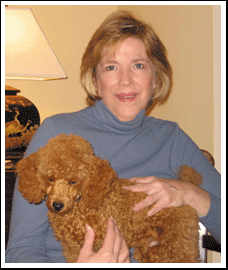Managing Trades In A Consolidating Market
Barbara Rockefeller
by Jayanthi Gopalakrishnan
Barbara Rockefeller of Rockefeller Treasury Services is an international economist, author, newsletter publisher, and trader specializing in foreign exchange, with more than 20 years of institutional experience. Her "Daily Currency Briefing" newsletter is a synopsis of events and forecasts in spot foreign exchange, published for central banks, fund managers, and multinational corporations, while the "Daily Futures Report" is a technical analysis-based report on currency futures. Prior to starting the newsletter business in 1990, she was the senior risk manager in the international division at Citibank. STOCKS & COMMODITIES Editor Jayanthi Gopalakrishnan interviewed Rockefeller via telephone on October 6, 2005.

We want the market to be neat and logical, but the market is often wrong.
How did you get started in technical analysis?
I was an economics major in college and had to write a senior thesis. I had just spent a year at the University of Keele in Staffordshire, England, so I decided to write about why the pound must be devalued. This was back in the days of fixed exchange rates, and in those days, we thought foreign exchange rates were set by economics. As it happens, before I finished the thesis, they did devalue the pound. My thesis advisor thought I was perspicacious... and of course, I didn't have a clue! Who has a clue when they are 21?
Most people don't. So did that get the wheels rolling?
Not really. Even after exchange rates were floated in the 1970s, analysts still thought that economics ruled FX rates. When I was at Brown Brothers Harriman, they had a process of forecasting exchange rates consisting of everybody in the room writing down their forecasts for one, three, six, and 12 months. Then the boss would take all the numbers, knock off the high and low estimates, average the rest, and there was your forecast. It was an incredibly ineffective way to forecast! Moreover, a lot of value judgments went into the forecasts, like my colleague who always said, "America is the greatest country in the world. The dollar should be strong!" There was a bias toward forecasting the dollar higher, even though it was falling, month after month. I spoke up against it and it made me a "troublemaker."
Classic economic ideas were not working, but nobody knew the word "trend" back then. Nobody knew "technical analysis," either. Martin Pring hadn't written his book yet, which was really the first one after Robert Edwards and John Magee's on the subject. We didn't have charts. We didn't have computers!
What did you do?
I kept track of all of my forecasts against what actually happened on graph paper. I also charted what the company's consensus forecast had been. It was clear that my intuitive trend-following was better than the forecasts based on economics and value judgments. At that point I really wanted to understand charting and technical analysis.
Eventually, I was sent to talk to a guy in the equity side of the firm. He understood what charting was all about and tried to explain it to me, although very little sank in at the time. I was open-minded, but even I had the impression it was all subjective voodoo.
Did a lightbulb switch on eventually?
I can't say that the light dawned, but I knew there was something there.
The firm assigned me a computer programmer and we started to do some work
on what a trend is, how it works, how you identify it. Unfortunately, we
got bogged down.
...Continued in the December issue of Technical Analysis of STOCKS & COMMODITIES
Excerpted from an article originally published in the December 2005 issue of Technical Analysis of STOCKS & COMMODITIES magazine. All rights reserved. © Copyright 2005, Technical Analysis, Inc.
Return to December 2005 Contents